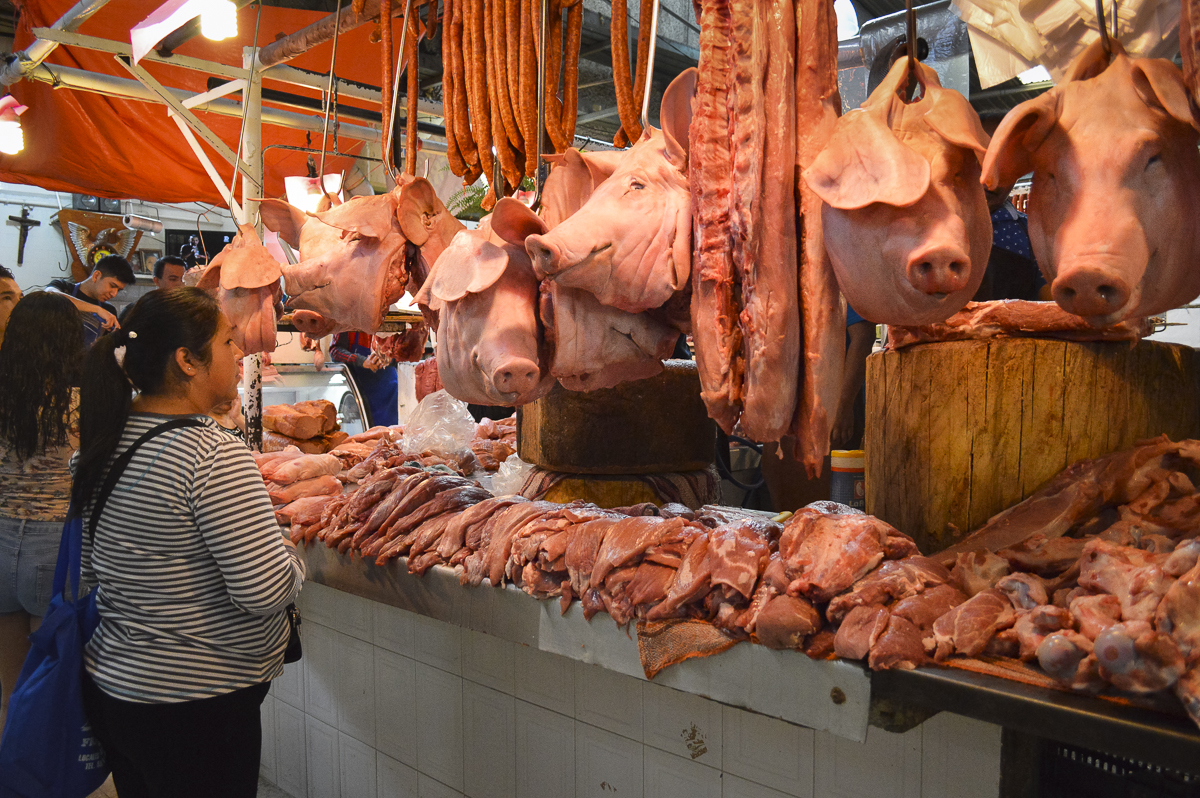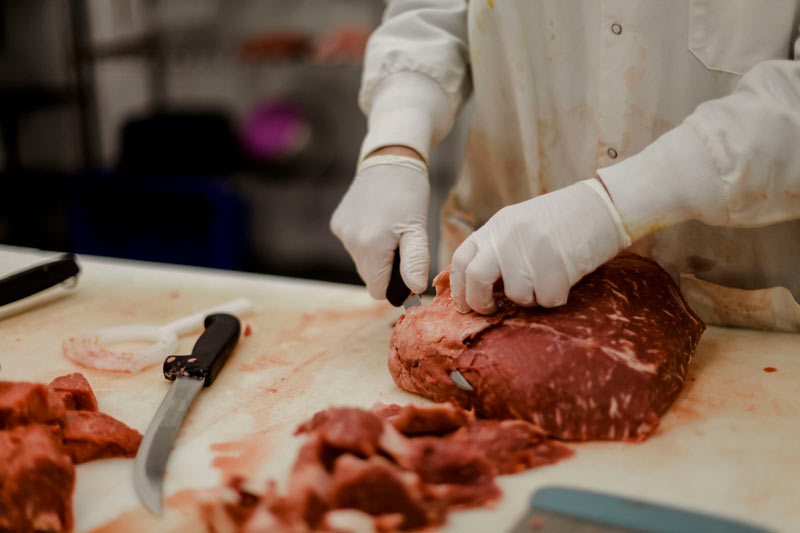Check Out Bagley Farms Meat Market Edwardsville IL for Farm-Fresh Meat and Specialty Cuts
Check Out Bagley Farms Meat Market Edwardsville IL for Farm-Fresh Meat and Specialty Cuts
Blog Article
Discover the Art of the Butcher's Cut in a Modern Meat Market
In the ever-evolving landscape of modern meat markets, the butcher's cut has actually transcended its typical origins, combining olden workmanship with contemporary techniques. bagley farms meat market edwardsville il. Today's butchers are not merely processors of meat; they are well-informed artisans that stress sustainability and honest sourcing. Their know-how in selecting and preparing cuts customized to certain cooking needs offers an unparalleled eating experience. Yet, what truly sets the contemporary butcher apart is their capability to forge a much deeper connection in between customers and the beginnings of their meat. How do these masters equilibrium practice with development, and what implications does this have for the future of meat consumption?
Evolution of Butchery Strategies

The mid-20th century saw butchery techniques better fine-tuned by scientific understandings right into muscle mass biology and meat aging, improving both tenderness and preference. Technologies like vacuum cleaner packaging and refrigeration prolonged product shelf-life, enabling butchers to diversify offerings and improve top quality control. This duration also noted the rise of customized devices, such as band saws and meat slicers, which increased precision and effectiveness in meat handling.
Digital systems now assist in tracking animal provenance and maximizing cuts to fulfill specific customer preferences. Furthermore, a resurgence in artisanal butchery has emerged, mixing traditional skills with contemporary expertise to cater to consumers looking for moral and sustainable meat options.

Understanding Meat Cuts

Understanding the details of meat cuts is important for both butchers and consumers looking for quality and value. Each cut comes from a various part of the pet, imparting unique tastes, structures, and cooking techniques. Proficiency of these distinctions not just improves cooking experiences however also takes full advantage of the energy of each carcass. For butchers, accurate cuts mirror skill and regard for the craft, ensuring very little waste and optimal yield.
The main groups of meat cuts include primal, sub-primal, and retail cuts. Butchers after that damage these down additionally right into sub-primal cuts, before finally generating retail cuts offered to customers, like ribeye or tenderloin.
Comprehending muscle mass make-up is important; muscular tissues used extra often by the animal tend to be harder and are best suited for slow cooking techniques, while less-used muscle mass, like those discovered in the loin, are much more tender and perfect for grilling or roasting. Familiarity with these distinctions equips consumers to make educated selections, improving their culinary endeavors.
Picking High Quality Meat
Picking the appropriate meat includes even more than simply selecting a visually attractive item from the display screen. The art of picking high quality meat requires a critical eye and understanding of certain attributes that indicate quality and excellence.
Second of all, consider the marbling, which describes the white streaks of fat within the muscle mass. Proper marbling is an essential indicator of tenderness and taste, as it thaws during food preparation, improving the meat's juiciness. Keep in mind, higher marbling frequently associates with premium quality cuts, such as USDA Prime.
Structure is another essential aspect; meat needs to feel solid to the touch, not slimy or overly soft. Additionally, be mindful of the aroma. Fresh meat ought to have a clean, neutral scent, devoid of any kind of sour or repulsive odors.
Pairing Cuts With Food Preparation Approaches
Effectively coupling cuts of meat with the appropriate food preparation methods is necessary for achieving optimal flavor and structure. These methods boost the meat's all-natural tastes and ensure a juicy surface.
Conversely, harder cuts like brisket and chuck roast are rich in collagen, which breaks down right into gelatin when cooked slowly. These cuts are suitable for braising or sluggish roasting, allowing the meat to tenderize over time and create deep, complex flavors. Cuts such as brief ribs and pork shoulder fare well with slow-cooking techniques, where extended cooking times change their durable structures into succulent dishes.
Lamb shanks and oxtail, which need long term food preparation to soften, are ideal Look At This prospects for stewing or slow-moving simmering. These methods coax out abundant, passionate flavors while keeping moisture. By comprehending the one-of-a-kind features of each cut, cooks and home chefs alike can raise their cooking developments, ensuring each dish is both satisfying and remarkable.
The Butcher's Duty Today
Browsing the evolving landscape of the contemporary meat market, the butcher's function today prolongs beyond simple preparation of cuts. Contemporary butchers are culinary artisans, instructors, and supporters for lasting techniques.
In enhancement to crafting exact cuts, butchers currently engage straight with consumers, using cooking guidance and tailoring options to match private requirements and preferences. Their proficiency in meat aging, marbling, and taste accounts encourages consumers to make enlightened choices, improving their cooking experiences. This personalized service exemplifies the butcher's developing duty as a relied on advisor in the cooking area.
In addition, butchers are critical in decreasing waste, using whole animals to create varied items such as sausages and supplies - bagley farms meat market edwardsville il. This comprehensive approach not just appreciates the animal yet likewise straightens with contemporary sustainability objectives. By doing this, the modern butcher embodies both custom and technology, adapting to an ever-changing market while preserving the virtuosity and honesty of their craft

Conclusion
The contemporary butcher's craft elaborately weaves traditional methods with modern innovations, highlighting lasting practices and ethical sourcing. Mastery in recognizing diverse meat cuts and top quality indicators empowers butchers to offer educated recommendations, lining up details anonymous cuts with i was reading this optimum cooking methods. This know-how not just elevates culinary experiences but also enhances the link between customers and the origins of their food. By recognizing historical methods while welcoming modern needs, the butcher's function continues to be crucial in today's advanced meat market.
Report this page